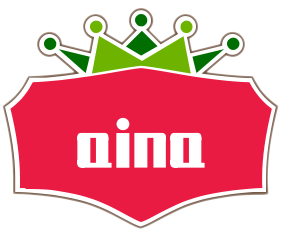Bitfrost, in the current crypto landscape, typically denotes a multi-chain or liquid-staking framework rather than a single monolithic project.
The term has been used by several teams in different ecosystems, which can cause some confusion if a single “Bitfrost crypto” description is assumed.
Below is a concise, practical guide to understanding Bitfrost in the most prominent contexts you’re likely to encounter.
Overview
Bitfrost is presented as a cross-chain interoperability layer designed to connect disparate blockchain ecosystems, enabling developers and users to access multi-chain functionality from a single platform.
It aims to reduce fragmentation in Web3 by providing standardized primitives for cross-chain interactions, staking-related utilities, and governance-enabled operations.
What it is
Bitfrost positions itself as a middleware layer for DeFi and decentralized apps, offering cross-chain communication, liquidity movement, and potentially standardized staking or yield mechanisms across chains.
It emphasizes developer-friendly tooling, security considerations, and governance-driven upgrades to adapt to an evolving multi-chain landscape.
How it works
-
Cross-chain infrastructure: Bitfrost enables messages, asset transfers, and state synchronization across multiple blockchains, leveraging bridges, relays, or relay-like mechanisms to ensure compatibility and security between chains.
-
Token and asset handling: Users can interact with assets on one chain while benefiting from services, data, or liquidity on another, enabling more generalized DeFi and dApp functionality.
-
Governance and economy: The platform often relies on its native token for governance voting, protocol upgrades, and incentive design that aligns participants across different chains.
Airdrop details
-
Airdrop programs typically include: eligibility criteria (e.g., prior participation in Bitfrost ecosystems, testnet activity, or holding a specific token), action requirements (sign-ups, liquidity provisioning, or cross-chain interactions), and distribution mechanics (claim windows, vesting schedules, and regional restrictions).
-
Participation often involves using testnets, completing tasks, or interacting with partner dApps to earn eligibility for token rewards. Always verify official announcements for exact eligibility, timelines, and requirements.
Step-by-step participate in its airdrop
-
Step 1: Verify eligibility via official Bitfrost channels (website, social channels, or community forums).
-
Step 2: Create or connect a compatible wallet and ensure it’s funded with testnet or mainnet tokens as required.
-
Step 3: Complete the listed tasks (e.g., testnet interactions, liquidity provision, sign-ups, or onboarding activities) within the specified windows.
-
Step 4: Submit any required forms or disclosures and monitor announcements for claim instructions and vesting details.
-
Step 5: Track distribution and vesting schedule, and perform any necessary claim steps within the allowed timeframe.
Tips For Maximizing Bitfrost Airdrop Rewards
-
Understand the exact project: Bitfrost concepts appear in multiple ecosystems with different eligibility mechanics (liquid staking, cross-chain primitives, or governance participation). Always verify the specific Bitfrost variant, network, and token economics for the airdrop you’re chasing. This avoids chasing outdated or unrelated campaigns.
-
Follow official channels: Prioritize announcements on the project’s official website, verified social accounts, and in-community forums. Only rely on primary sources for eligibility criteria, timelines, and claim procedures.
-
Use non-custodial, diversified activity: Many airdrops reward users who demonstrate genuine ecosystem participation across multiple facets (staking, liquidity provision, testnet activity, wallet usage). Avoid concentrated, automated patterns that could be flagged as wash activity.
Usage and examples
-
Developers: Build dApps that leverage cross-chain data, liquidity, and state, enabling multi-chain user experiences without bespoke bridges for every pair of chains.
-
Users: Engage with multi-chain services, yield strategies, and interoperable dApps that enable broader access to assets and liquidity across ecosystems.
Price and market context
-
As a newer cross-chain infrastructure, Bitfrost-related tokens or incentives may have volatile pricing and liquidity depending on adoption, network effects, and broader market conditions. Always verify the latest market data from reputable trackers and official channels.
Manuals and resources
-
Primary sources include official Bitfrost documentation, developer guides, security whitepapers, and governance portals. Access to the latest manuals and developer tools ensures accurate implementation details and up-to-date features.
Common problems and troubleshooting
-
Connectivity and compatibility issues: Ensure chain support is active and that your wallet and node configurations align with the target networks.
-
Security concerns: Always use hardware wallets when possible for significant interactions; keep software up to date; beware phishing and social engineering.
-
Governance participation: If voting windows are missed or balances are insufficient, check alternative participation methods or staking requirements.
FAQ
-
Is Bitfrost a bridge or a full cross-chain protocol? It aims to function as a cross-chain infrastructure layer, which may include bridging-like capabilities but is typically broader, offering developer tools for cross-chain apps rather than just token transfers.
-
What chains are supported? Support varies by version and deployment; official docs list the current set of connected networks and any planned integrations.
-
How is security handled? Security typically relies on multi-party computation, relays, verification schemes, and regular security audits; review the specific security model in the official docs.
-
How to participate in governance? Token holders usually participate via on-chain voting and governance proposals, with details on eligibility and voting periods provided in the governance portal.
Conclusion
Bitfrost-style cross-chain infrastructure has the potential to streamline multi-chain development and user experiences, reducing fragmentation across ecosystems.
Success depends on robust security, broad chain support, clear governance processes, and compelling developer and user incentives.
Regular updates from official sources will clarify exact features, supported networks, and airdrop mechanics as the ecosystem evolves.

